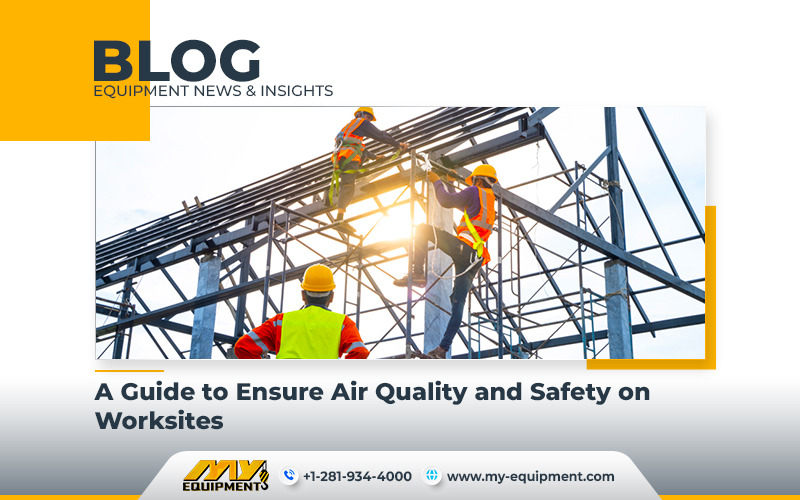When it comes to establishing a secure and effective workplace, air quality is something that should not be overlooked. Whether on a bustling manufacturing plant or a busy construction site, the impact of poor air quality on worker health and overall efficiency can be a lot worse than you’d imagine. Construction sites actually often host a variety of airborne risks, ranging from dust and chemicals to fumes and allergens.
But, maintaining excellent air quality on construction sites is very much possible with careful planning, proactive measures, and effective strategies. This guide is designed to walk you through the process of preserving clean and fresh air for your team, leading to a healthier and more environmentally friendly work environment. Construction businesses should embark on the journey toward cleaner air to promote the well being and productivity of everyone on their job sites.
Understanding the Reasons for Poor Air Quality
Poor air quality can stem from a mix of natural and also man made factors. Natural events like wildfires, volcanic eruptions, dust storms, and hurricanes can release pollutants into the air, often spanning vast distances. Meanwhile, human activities such as vehicle exhaust, factory emissions, and chemical processing contribute to artificial pollutants, further deteriorating the air quality.
Locating the Local Air Quality Index
Air quality challenges can differ based on the work environment, yet addressing health concerns is a common necessity across various industries. Dust is a universal byproduct of construction, arising from tasks like excavation, drilling, and cutting materials. Heavy equipment operators and other construction workers present on a work site inhale a lot of dust and suffer because of that.
Effective Strategies for Improving Air Quality and Ensuring Job Site Safety
Promote Education and Awareness
Educate your employees about the importance of air quality and potential sources of pollutants. Conduct regular training sessions to impart best practices, safe chemical handling, and the use of personal protective equipment (PPE) to really minimize emissions and exposure.
Implement Pollution Control Measures
Embrace greener technologies, upgrade machinery to meet pollution standards, and establish maintenance schedules to keep your used heavy equipment in optimal condition.
Better Ventilation
Make sure to install adequate ventilation systems to expel any pollutants from indoor spaces. Regularly inspect and maintain ventilation systems, including filters and exhausts. Consider incorporating air purifiers or filtration systems for further improvement.
Dust Management
Develop and enforce regulations for managing dust and particulate matter. Employ strategies such as covering materials, using dust control systems, and applying dust suppression techniques like water sprays. Regularly clean workspaces and tools to reduce dust buildup and dispersion.
Encourage Eco Friendly Transportation
You should try to get your employees to adopt alternative modes of transportation, such as carpooling, public transit, or biking, to minimize the vehicle emissions. Offer incentives for environmentally conscious commuting and promote the use of electric or hybrid vehicles.
Workers’ Role in Improving Air Quality
While supervisors play a very important role in safeguarding employee safety through air quality measures, workers themselves can directly impact the job site’s air quality. Engaging in open discussions with superiors might be challenging, but it is necessary for companies to foster a culture that values the well being of employees.


 1400 Broadfield Blvd, Houston, TX 77084,
USA.
1400 Broadfield Blvd, Houston, TX 77084,
USA.